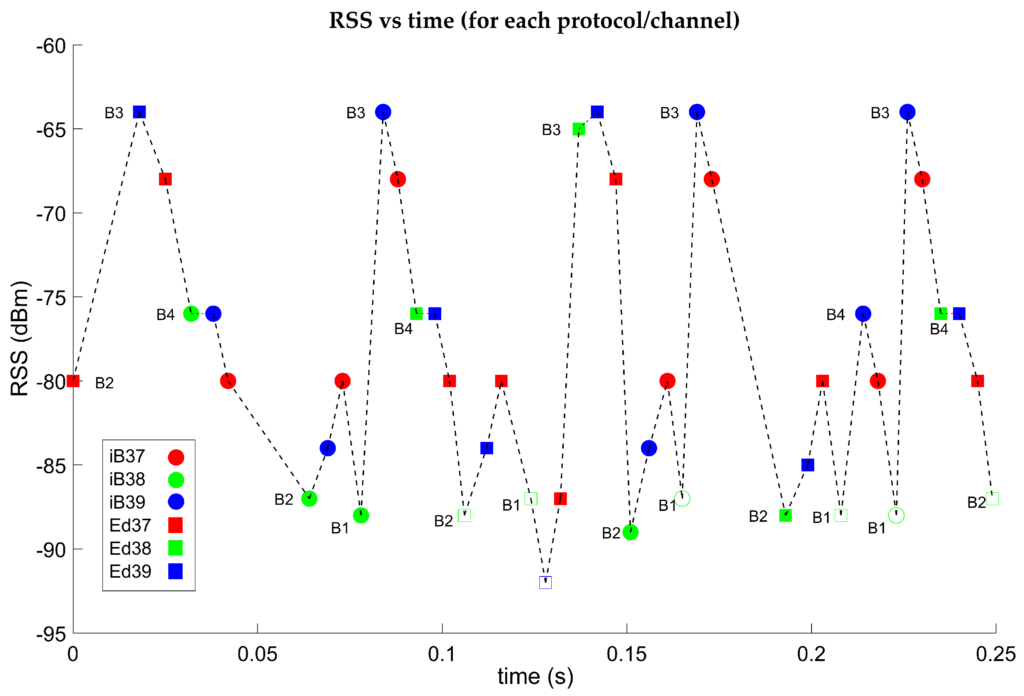There’s recent research by Gabriele Salvatore de Blasi, José Carlos Rodríguez-Rodríguez, Carmelo R. García and Alexis Quesada-Arencibia of University of Las Palmas de Gran Canaria, Spain on Beacon-Related Parameters of Bluetooth Low Energy: Development of a Semi-Automatic System to Study Their Impact on Indoor Positioning Systems.
The paper starts by giving an overview of fingerprinting. It explains how fingerprinting is time-consuming and labour-intensive. Fingerprinting is affected by:
“Reflection, refraction, path loss, large fluctuations, multipath fading, non-line-of-sight (NLOS) conditions”
A problem is that some environment-related factors change over time, such as changes in hardware/furniture, the presence of people and ambient humidity conditions meaning that fingerprinting isn’t a one-off activity.
The researchers conclude that the highest transmission power (+4 dBm) produces the best location accuracy. However, this uses a lot of battery power. Use of the lowest power (−20 dBm) only worsened the accuracy by 11.8%. Similarly, lowering the density of the beacons by around 50%, the error increase was only about 9.2%. Increasing the advertising interval didn’t have a significant impact on the accuracy.

The affect of beacon orientation was assessed and vertical orientation was found to be best. As expected, introducing a slight electrical noise during the positioning phase did not significantly affect accuracy.
Read about Locating with Beacons